“It’s not the size of the road, it’s how people use it,” my driver said, as he gingerly nudged his minibus between a delivery truck and a double-parked scooter. Slamming on the brakes as another minibus zipped around him and cut him off, he winked, “It helps to have more than two eyes.”
I’m comfortable driving just about anywhere in Europe. But Italy’s Amalfi Coast is where I draw the line. Big buses, little minivans, scooters, and pedestrians all simultaneously stake their claim on a two-lane road, often taking far more than their share out of the middle. Side-view mirrors brush within milimeters of each other, honking horns and furiously gesticulating arms assert right-of-way, and pedestrians scurry for their lives along tiny shoulders.
I joined a minibus tour and let a local expert to do the driving, sparing myself some stress — and, most likely, accidents. Sitting in the back seat of the minibus, the passing traffic was fascinating rather than terrifying. I periodically locked eyes with confident bus drivers, reckless motorino pilots, and terrified tourists wishing they’d passed on the rental car.
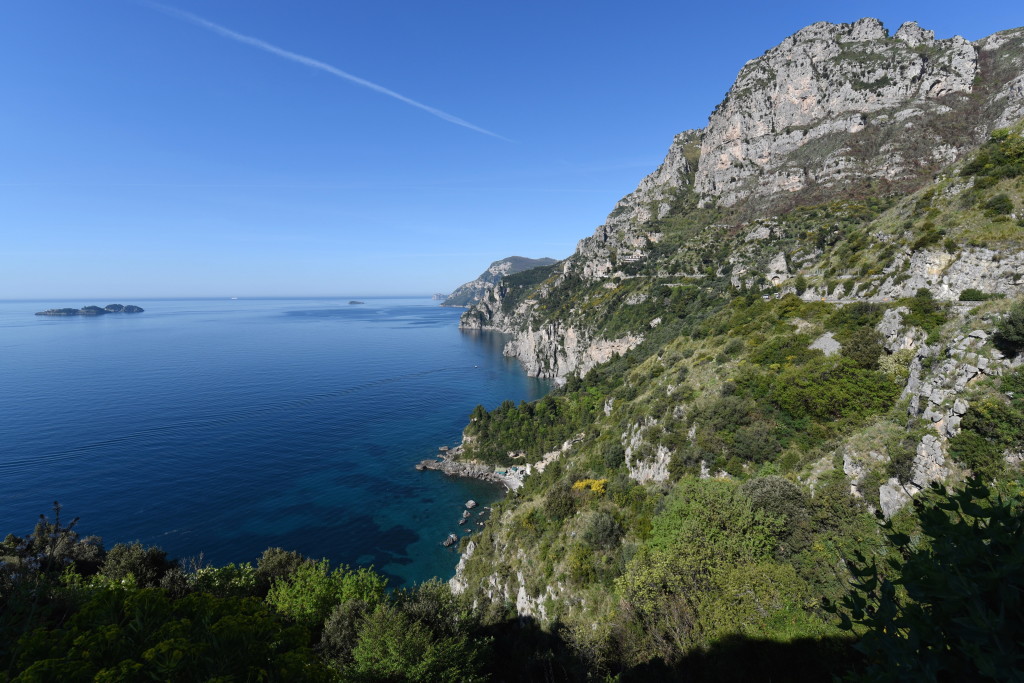
While someone else negotiates the hairpin turns, I get to focus on the jaw-dropping scenery. Jagged limestone peaks plunge directly into the deep blue and green waters of the Bay of Salerno. Somehow people have figured out a way to settle this mountain-slashed terrain — filling every available gully with a cantilevered gaggle of colorful houses. Mixed in are the villas of the rich and famous, who have been drawn here since ancient Roman times. It seems that every hotel we pass is named Bellevue, Belvedere, or Bellavista. And the views are beautiful indeed.
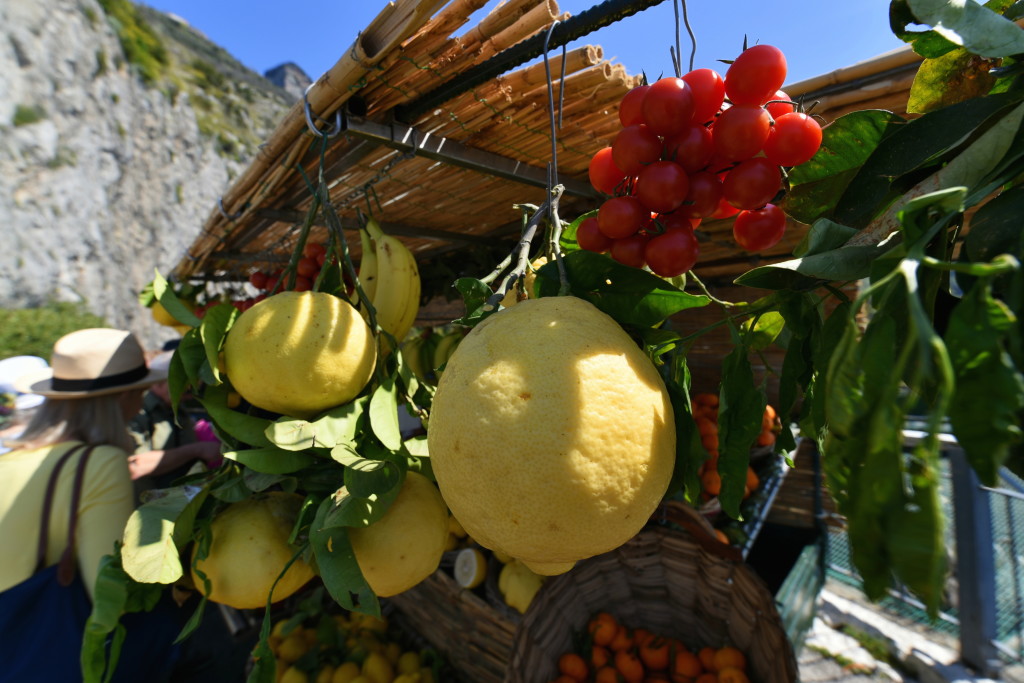
In the Amalfi Coast equivalent of a lemonade stand, entrepreneurial locals set up shop at each wide shoulder, selling products made from the local specialty, handpicked lemons. At one particularly scenic spot, just past Positano, a weathered old man stood next to his rickety cart piled high with fresh citrus. The local authorities let him set up shop here, and in return, he keeps this stretch of road litter-free. Popping fruits in and out of his hand-cranked press, he squeezed me a blend of orange, lemon, and clementine juice…delicious.
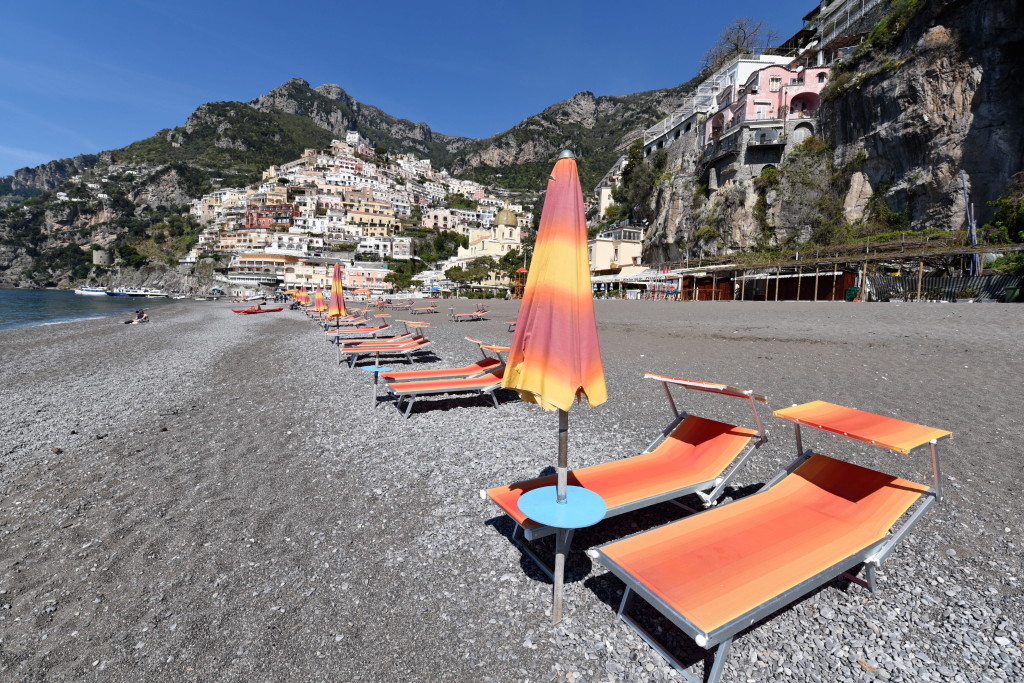
Positano is draped over a series of terraces that stairstep down to the sea. Like a natural amphitheater, the town faces its majolica-tiled church dome and its pebbly beach. And even though it’s only April, people are already catching some sun.
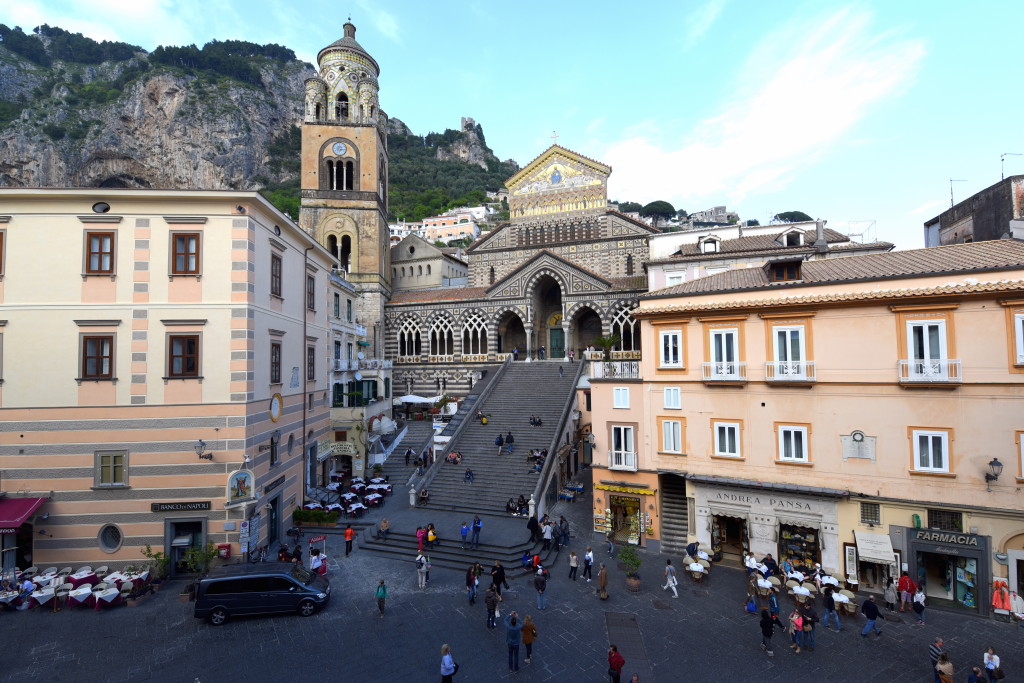
Amalfi, the coastline’s namesake, was a big deal a thousand years ago. Along with Venice, Pisa, and Genoa, it was one of Italy’s Maritime Republics — independent, business-minded city-states that were more powerful (and more wealthy) than many entire kingdoms. But a tsunami wiped out Amalfi in 1343, and it became a forgotten backwater. Strolling Amalfi today, it feels the most like a real, living city of anyplace along the Amalfi Coast. The main square is one of those wonderful piazzas that has great feng shui — it encourages lingering. A long staircase (sort of a mini-Spanish Steps) leads up to the front door of a thousand-year-old cathedral. Those stairs are the town’s meeting point — a picturesque and convivial suntrap.
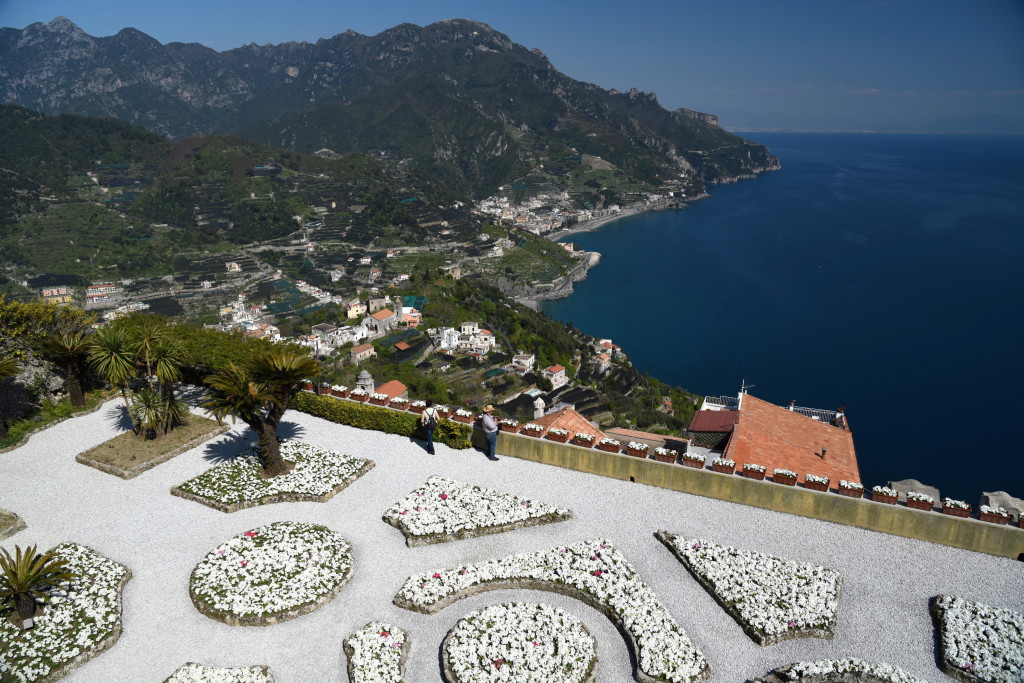
High above it all, minuscule Ravello is the Amalfi Coast’s version of a hill town. It clings to a cliff so steep that the adjacent town (across a big gorge) is named “Scala” — literally, “Stairs.” Understandably, Ravello is prime territory for grand villas, and two of them — each with sprawling seaview gardens — bookend the lazy, nearly traffic-free town center. And yet, for all its glamor, Ravello’s core feels pleasantly low-key, even humble. Teens hang out on the church steps, while across the square, a row of perfectly positioned umbrella pines thoughtfully provide a canopy of shade for the bellavista benches.
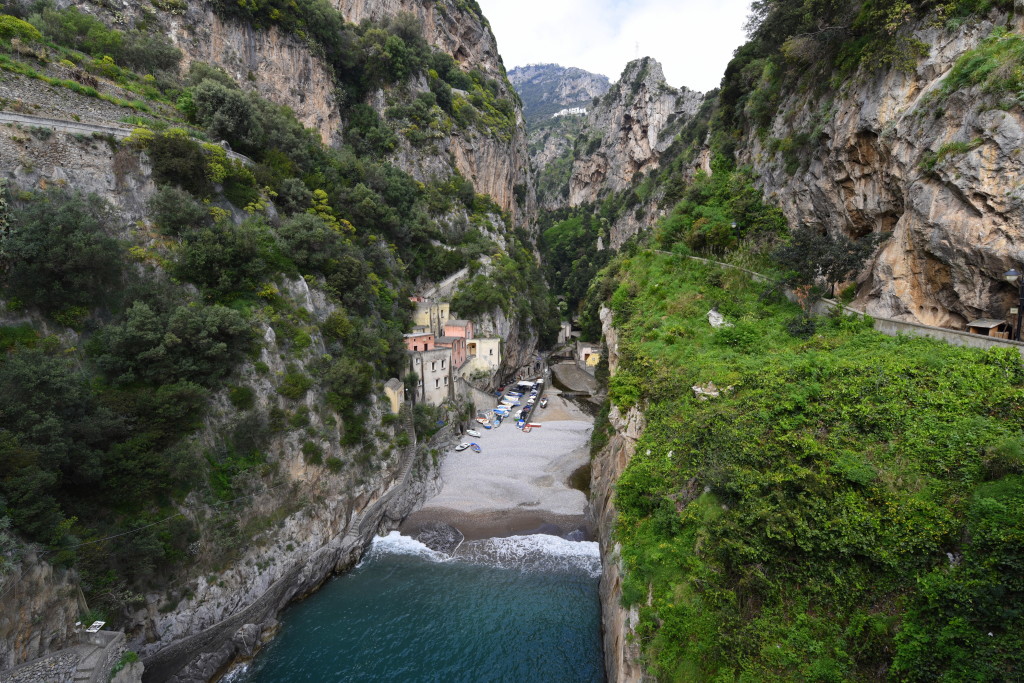
Some of the most scenic stops are blink-and-you’ll-miss them towns whose names nobody knows. I was particularly intrigued by little Fiordo, the aptly named “Fjord.” A tiny fishing hamlet tucked at the apex of a deep inlet, hemmed in by cliffs on nearly all sides, it’s been turned into a vacation resort. “But only in summer,” my driver explained. “May, June, July, August. The only months where it actually gets any sun.”
All in all, driving along the Amalfi Coast — with someone else behind the wheel — is a day very well spent.
Gorgeous pics! My husband and I hit the Italian “big 3” last year: Rome, Florence, Venice. I’m looking forward to our next trip to Italy and seeing the Amalfi Coast.